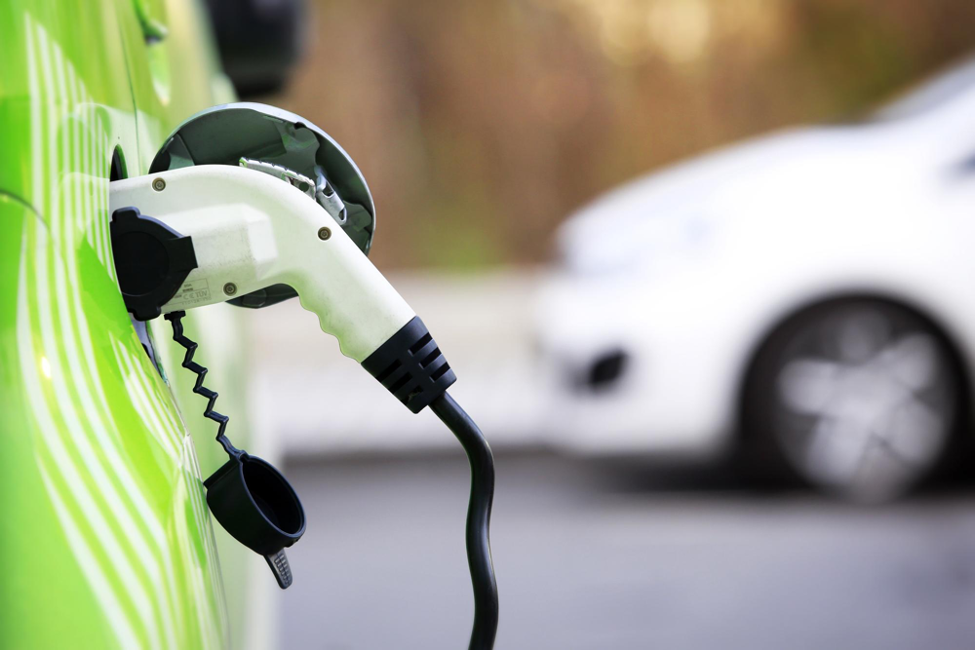
EV Chargers In Your Home: The Complete Guide
Electric vehicles are the way of the future, and not just because of their green energy. EVs are also the best tech on four wheels, reducing fuel and maintenance costs for owners and delivering a better driving experience.
Of course at Solahart, we’re big on installing green energy, it’s what we do, so a car that has enhanced energy security and reduces air pollution is right up our alley. Better yet, if your electric vehicle is charged on your home’s rooftop solar power, greenhouse gas emissions can be completely eliminated. That’s a win for everyone.
When it comes to your everyday electricity use, including charging the battery on your EV, you want to be sure you are getting the best of what’s available. Unfortunately, not everyone knows what options are out there for charging electric cars, or how the power output supply can impact your charging times. Not only is this a big inconvenience for current EV owners, but it’s also off-putting for those interested in purchasing an EV as their next car.
Because plugging your car in to charge for 24 hours or more isn’t always possible or convenient, we’re delivering the ultimate guide to EV charging at home so you can make an informed decision not just about the type of car you own and the impact your have on the environment, but also on making your choice to go electric as efficient and convenient as possible for daily living.
So let’s start by getting into how electric vehicle chargers work and move into how you can easily access them from your home…

How do EV Chargers Work?
Unlike petrol cars that fill up at the petrol station, electric cars use a socket-to-outlet connection to charge their battery from the main electricity grid.
Electric vehicle supply equipment (EVSE), also known as a charging station, is the unit of power supply that sits outside your car, so for example a wall plug in your home. Sometimes the charging unit will be attached to the charging cable end of your car, but more often it’s a point of power you’ll be plugging your car into.
How much power and the type of power the EVSE provides determines how quickly power gets to your car battery.
In most cases, your EV will come with a standard power plug for domestic power supply, giving you the flexibility to plug into any household power point to recharge your car battery. This gives you the ability to charge your car anywhere there is power. You can even run out an extension lead if needed.
The problem is that charging this way takes a long time because the output supply is low and the current fluxes and changes direction as part of its ongoing cycle. At the same time, the converter unit housed inside your car also needs to spend time converting the domestic AC (alternating current) coming through the cable to DC (direct current) so that the electricity flows directly to the battery in one smooth, forward motion.
If you have a DC charging station, you are able to get more power to your car battery much faster, which is further accelerated by bypassing the need to use the car’s internal converter.
If you want more power than what a standard domestic power point can offer and if you want an isolated power supply to your electric car so you are not sharing electricity with the rest of your household needs, there are other options.
What types of EV chargers are there?
There are three different types of EV charging stations available. Each delivers a different power output supply so choosing the right one for your charging needs and location is important.
Level 1. Charge at any domestic power point supply.
The 120-volt outlets are best used for long charges when you have your car securely parked overnight. While charging your EV at Level 1 is easy and cost-effective, it will be slow to recharge, which won’t be a problem if your commute is local.
Level 2. Dedicated power source units in private garages and free public charging stations.
These are 240-volt outlets that halve, or even quarter the changing time of your EV battery, meaning that even a two-hour top-up will give you a big boost in your driving range. As well as being the charge type for free public top-ups at shopping centres, this is also the type installed in private homes and garages.
Level 3. Public use rapid chargers.
If you are driving long distances, level three chargers will be your ticket to travel between cities. The DC fast chargers and also the dedicated Tesla Superchargers are heavy-duty power stations put in place for public use around Australia. You will need to pay for your time plugged in, they work just like a petrol pump in that regard (and in style as well).
With level three charge stations, the charge to battery will be stopped once it reaches 80% to help your battery life and overall performance.
Power Point Plug VS Hardwired Chargers
We recommend installing a power point plug, something like a NEMA 14-50 outlet, rather than hardwired charging equipment. Some EVs come with portable charging cords that will work on both 120 and 240-volt circuits which means you can plug in no matter the voltage, giving you that added flexibility.
Having a plug-in unit also means you can take the unit with you if you move house.
What do I need to prepare my Home For EV Charging?
If necessary, the wiring should be upgraded to handle the new load. While this won’t be a problem for newer houses or those who have been rewired recently, it may be a big cost for older homes as a lot of work and new electrical panels will be required. You can get away with an increased power under 50 amps without installing a new panel, which will boost your charge time without tripping your fuses.
For homeowners who already have the right circuit panels or wiring capacity, getting your home ready for EV charging is easy.
First, you will need to purchase your EVSE. This is the wall-mounted box with the cord and plug that supplies the volts of electricity.
Before you buy your unit, talk to a professional who knows about installing car chargers in Australian homes to learn which is the right one for you. You want to be sure you match the volts and amps provided through the unit with what your car (and home) can handle.
We can help with designing and planning your EVSE location to factor in where the unit will go in relation to your parked car, what load your circuit can handle, any solar energy you want to harness and your expected budget. It is good value to consider having a dedicated power supply to your car charger as sharing a circuit with the rest of your home will slow down your car charge.
Lastly, be sure to give plenty of notice before your installation to apply for any permits you might need from your local council.
What is the cost of EV chargers?
There is a large choice for units and prices in Australia. A basic wall-mounted EVSE will cost around $600 to $900 but even at the base price, they come with tracking apps to monitor your charging sessions and the scheduling ability to switch your rates to off-peak.
If you want even more tech you can get it for a little extra with units that can monitor and adjust your solar power output for $1350. At the top end, you can pay from $2500 to $3000 and beyond for Bluetooth connectivity, customised settings and touchscreen control.
As well as the cost of the initial EVSE you will also need to pay for installation. This needs to be handled by a professional.
In most cases, you’ll want a dedicated 240-volt circuit installed. It’s best to get a written quote to know your exact budget, but as a general idea installation costs typically run between $750 and $1750, with the increase attributed to difficult access points and current electricity set up. Even modern and well-equipped homes will need to factor in the cost of additional heavy-duty cables to cover the distance from the electrical panel to the charging unit. You won’t be able to use an extension lead for this level of power, you will need heavy-duty wiring which can be costly, so look at placing the unit as close to your car parking spot as possible, and be ready for some additional costs to get the right set up.
Even with all that factored in and difficulties accounted for it’s unlikely that your installation will run to more than $2000.
Just keep in mind that any fees for council permits you may need will be paid in addition to your installation costs.
Overall you are set to charge your EV at home from day one using the level one domestic power plug, giving you the ability to plug in anywhere, anytime. While this is suitable for cars that don’t get frequent use or mileage, busy households and those on the go will find having a dedicated level two charging unit installed at home the most practical, safe and convenient avenue.
Take the time to find the right EVSE for your car and your household and be sure to have solid conversations with skilled professionals about your installation needs and outcomes.
Boost your charging time by installing a charging station through Solahart’s professional EV Charger Installers, or talk to us about taking your car emissions down to zero with solar power.
Book your free on-site
solar assessment
Rated 4.7 from 8,200+ customer reviews






